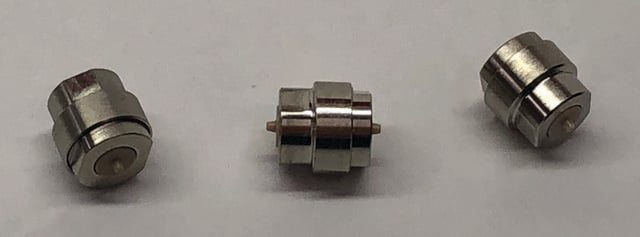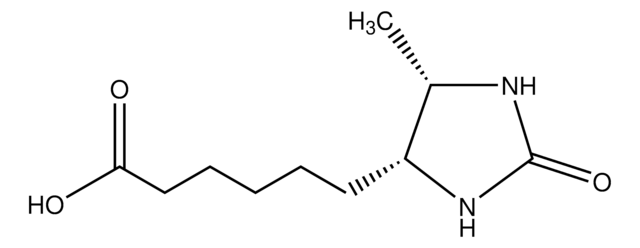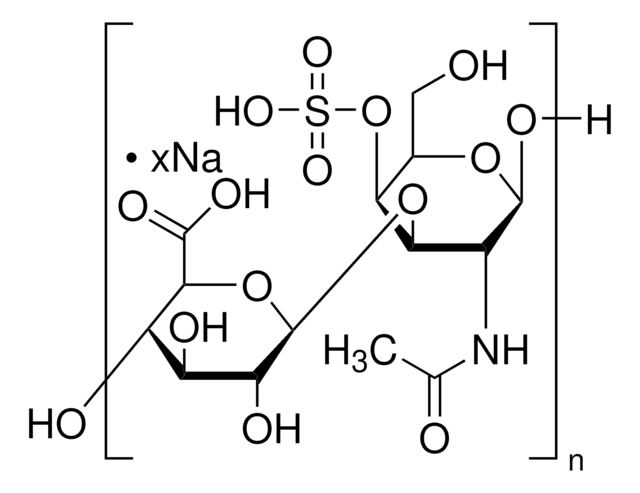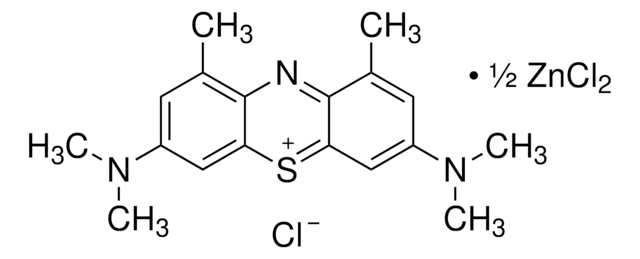648310
3,4-Ethylenedioxypyrrole
2 % (w/v) in THF
Synonym(s):
EDOP
Sign Into View Organizational & Contract Pricing
All Photos(1)
About This Item
Empirical Formula (Hill Notation):
C6H7NO2
CAS Number:
Molecular Weight:
125.13
MDL number:
UNSPSC Code:
12352103
PubChem Substance ID:
NACRES:
NA.23
Recommended Products
concentration
2 % (w/v) in THF
refractive index
n20/D 1.4070
bp
65-67 °C
mp
−108 °C
density
0.889 g/mL at 25 °C
storage temp.
−20°C
SMILES string
C1COc2c[nH]cc2O1
InChI
1S/C6H7NO2/c1-2-9-6-4-7-3-5(6)8-1/h3-4,7H,1-2H2
InChI key
IJAMAMPVPZBIQX-UHFFFAOYSA-N
Looking for similar products? Visit Product Comparison Guide
General description
3,4-Ethylenedioxypyrrole (EDOP) is an alkylenedioxypyrrole based conductive and electro-active polymer that can be used in electropolymerization. It produces conjugating polymers with good optoelectronic properties.
Application
EDOP can be used in the development of Poly(EDOP) which can potentially be used in the fabrication of electrodes for biomedical applications.
Monomer for the in situ chemical polymerization of the stable electrochromic polymer Poly(3,4-ethylenedioxypyrrole).
Signal Word
Danger
Hazard Statements
Precautionary Statements
Hazard Classifications
Acute Tox. 4 Oral - Carc. 2 - Eye Irrit. 2 - Flam. Liq. 2 - STOT SE 3
Target Organs
Respiratory system
Supplementary Hazards
Storage Class Code
3 - Flammable liquids
WGK
WGK 2
Flash Point(F)
-0.4 °F
Flash Point(C)
-18 °C
Personal Protective Equipment
dust mask type N95 (US), Eyeshields, Gloves
Choose from one of the most recent versions:
Already Own This Product?
Find documentation for the products that you have recently purchased in the Document Library.
Customers Also Viewed
Dominic Gehweiler et al.
Clinical anatomy (New York, N.Y.), 32(3), 361-368 (2018-12-07)
Distal radius fractures are common and fracture patterns and fixation can be complex. Computerized anatomy evaluation (CAE) might offer non-invasive and enhanced anatomy assessment that might help with implant selection and placement and screw length determination. Our goal was to
Gaupp,C.; Reynolds, J.;
Macromolecules, 33, 1132-1132 (2000)
Structured biotinylated poly (3, 4-ethylenedioxypyrrole) electrodes for biochemical applications
Darmanin T, et al.
Royal Society of Chemistry Advances, 2(3), 1033-1039 (2012)
Sonmez, G.; Reynolds, J.;
Journal of Materials Chemistry, 11, 289-289 (2001)
Poly (3, 4-alkylenedioxypyrrole) s as highly stable aqueous-compatible conducting polymers with biomedical implications
Thomas CA, et al.
Advanced Materials, 12(3), 222-225 (2000)
Our team of scientists has experience in all areas of research including Life Science, Material Science, Chemical Synthesis, Chromatography, Analytical and many others.
Contact Technical Service












